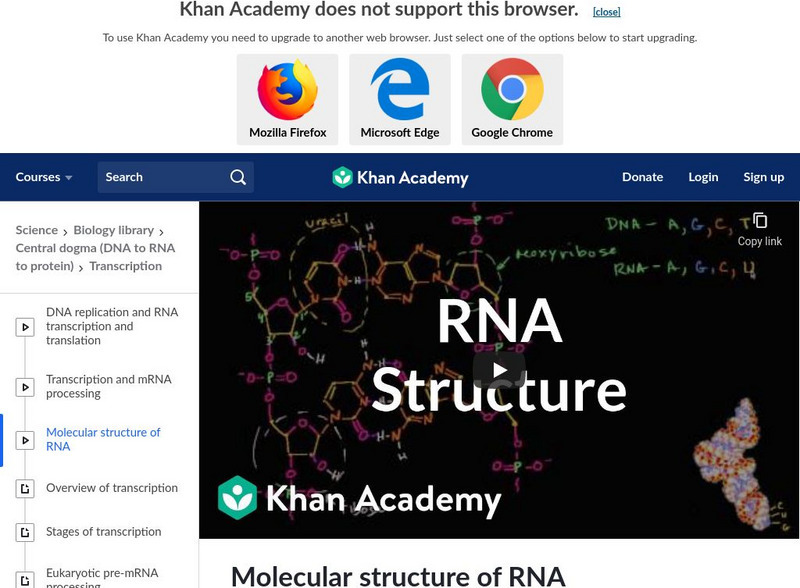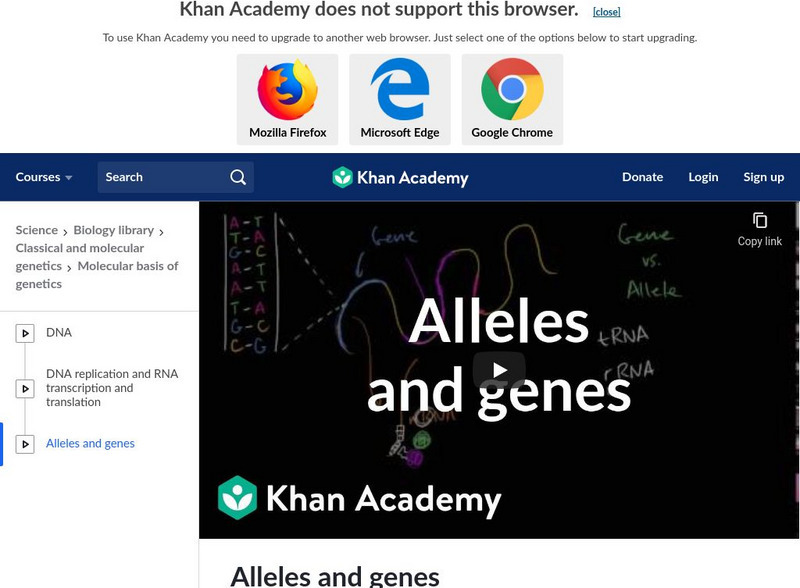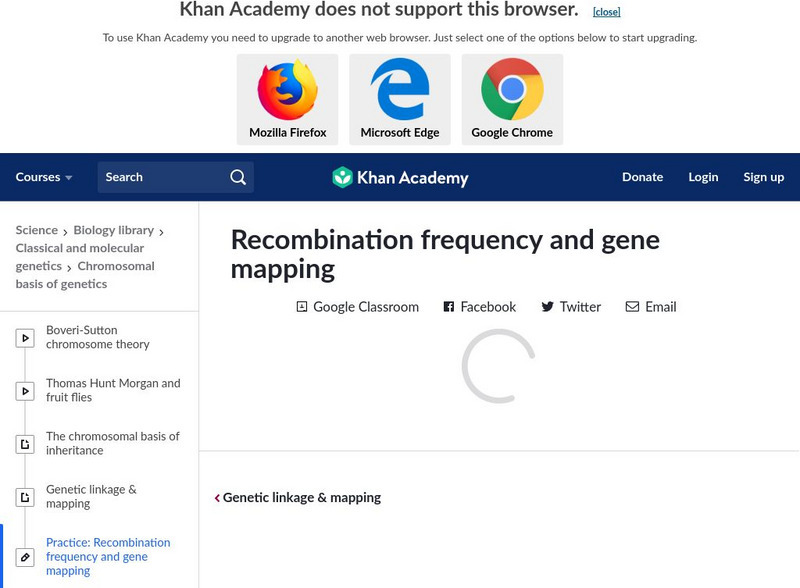Hi, what do you want to do?
Bozeman Science
Molecular Biology
Explore the bacteria at Yellowstone to introduce molecular biology. Scholars learn about the process of genetic engineering and how it has progressed over time, including the identification of the breast cancer genes and the main...
Howard Hughes Medical Institute
The Mammalian Molecular Clock Model
Animals don't read clocks, so how do they know when it is time for eating, sleeping, and other cyclical needs? Viewers watch an animation of the genes and the molecular clocks inside most mammals. They compare the difference in wild...
Howard Hughes Medical Institute
Molecular Activity in Aplysia Short-Term Memory
Scientists have yet to find the limit on the human brain's capacity for memory storage, so the potential is limitless! An animated video demonstrates how the brain places information in short-term memory. Viewers observe the...
Howard Hughes Medical Institute
The Molecular Cascade in Bacterial Quorum Sensing
Antibiotics kill bacterial growth, but widespread use results in antibiotic resistance. Researchers wonder if quorum sensing might allow us to treat bacteria without the resistance. View an animation of quorum sensing as it regulates...
Be Smart
3 Incredible Examples of Evolution Hidden in Your Body
Human traits trace back to simpler species—such as chickens, for example. Using the human genomes, scientists connect these traits to their ancestral origins. A video presentation highlights the structure of human DNA and makes a...
Curated OER
Human Genome
Welcome to the complex biological story that is our life. Great visual imagery zooms in on the dissection of a DNA double helix in our body. What happens with RNA? Where do amino acids come in? This resource explores our inner workings...
PBS
How Two Microbes Changed History
Where would we be without bacteria? As it turns out, we owe them everything! Introduce young biologists to endosymbiotic theory using an amazing video from an extensive biology playlist. Scholars discover the bacteria that may be...
Howard Hughes Medical Institute
Measuring Circadian Activity in Drosophila
How many hours should be in a day? One species of drosophila naturally prefers a 24.5 hour day, while another strongly prefers a 19-hour day. An animation and graph share data from each of these species when exposed to the typical light...
Khan Academy
Khan Academy: Molecular Structure of Rna
Learn about the molecular structure of RNA. [11:30]
Khan Academy
Khan Academy: Alleles and Genes
Learn about the gene as a stretch of DNA on a chromosome. Also find out about alleles as versions or sequence variants of a gene. [8:17]
Khan Academy
Khan Academy: Bozeman Science: Genetic Recombination and Gene Mapping
Mr. Andersen explains the concepts of genetic recombination and gene mapping. [9:43]















